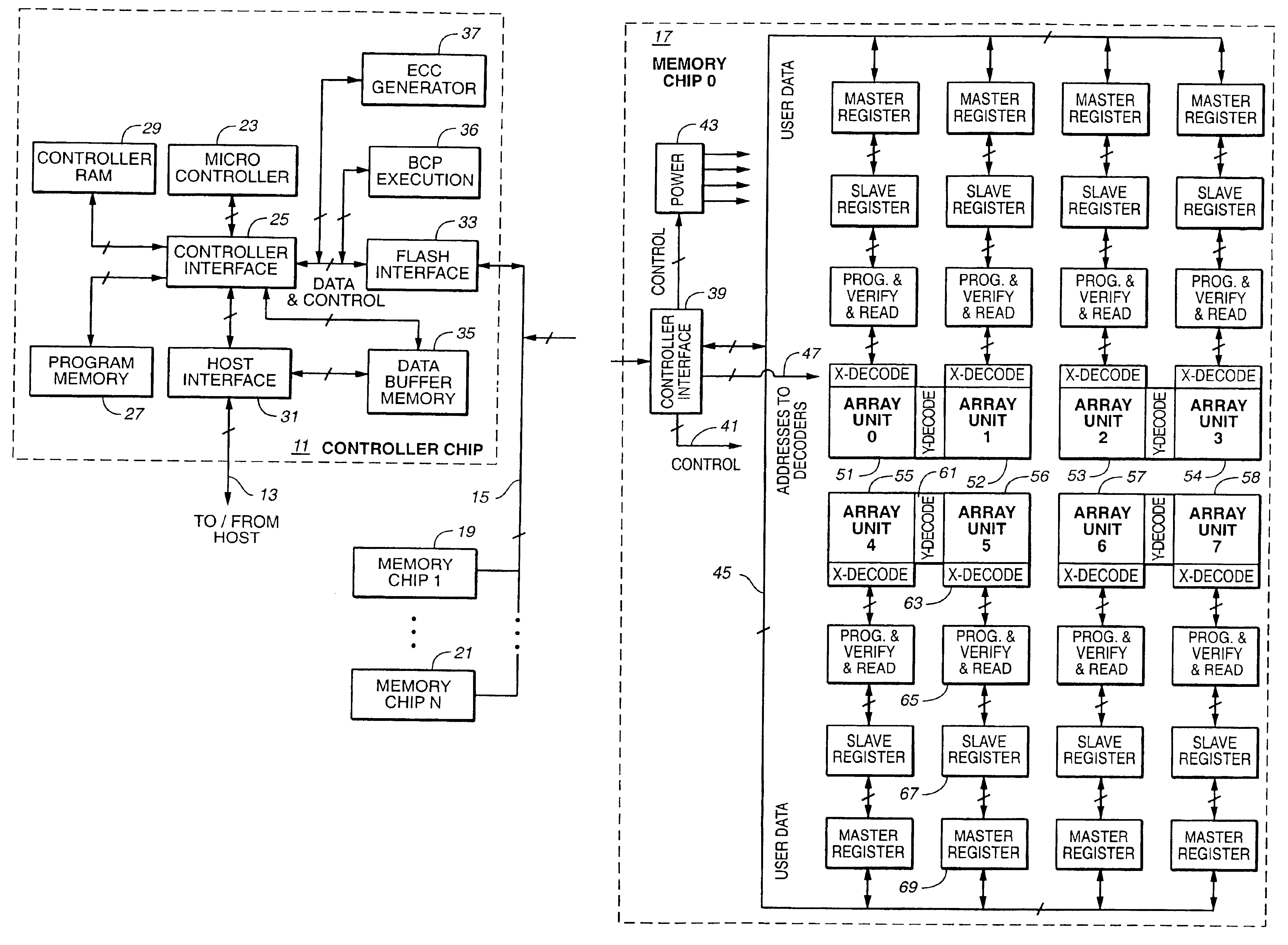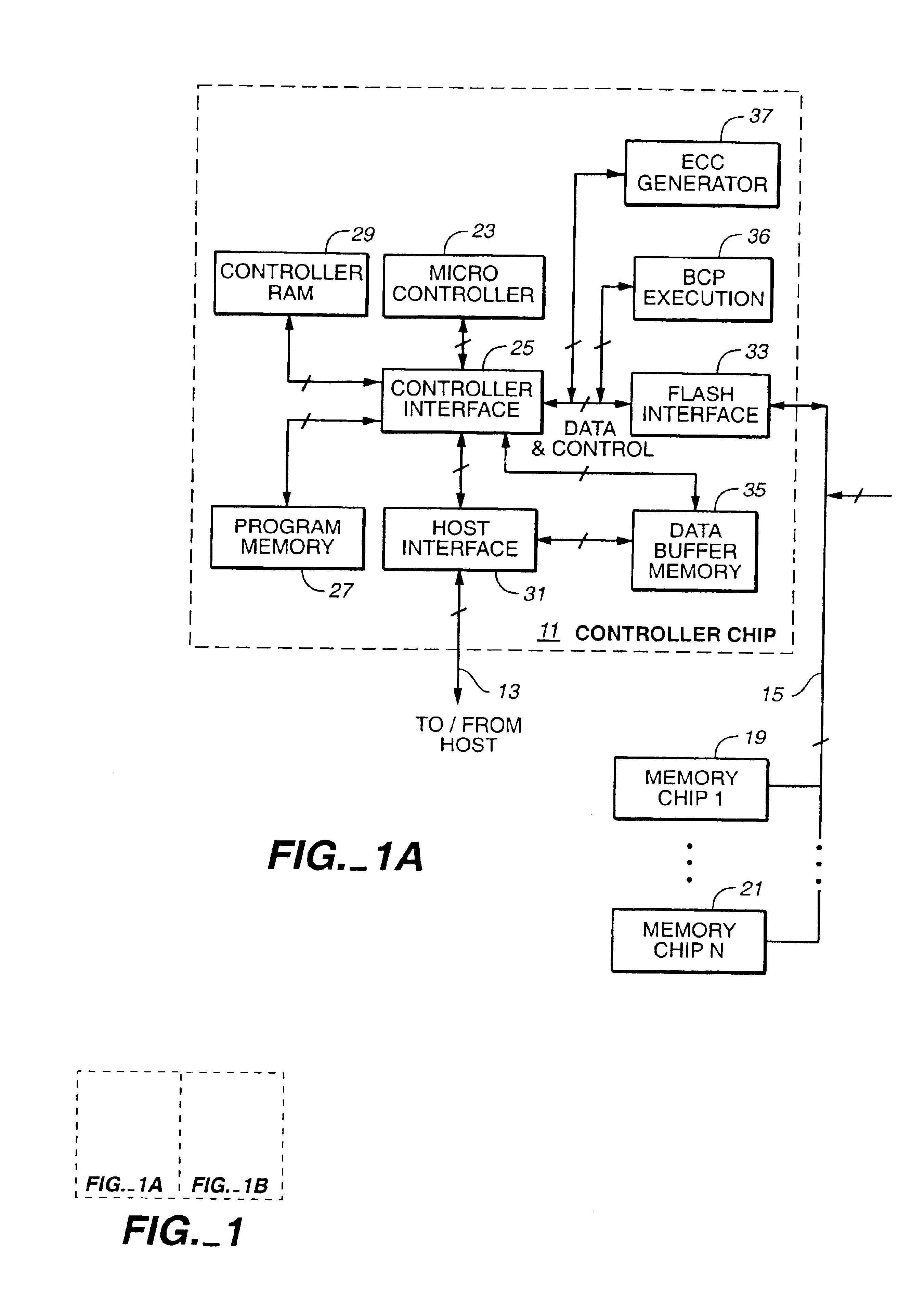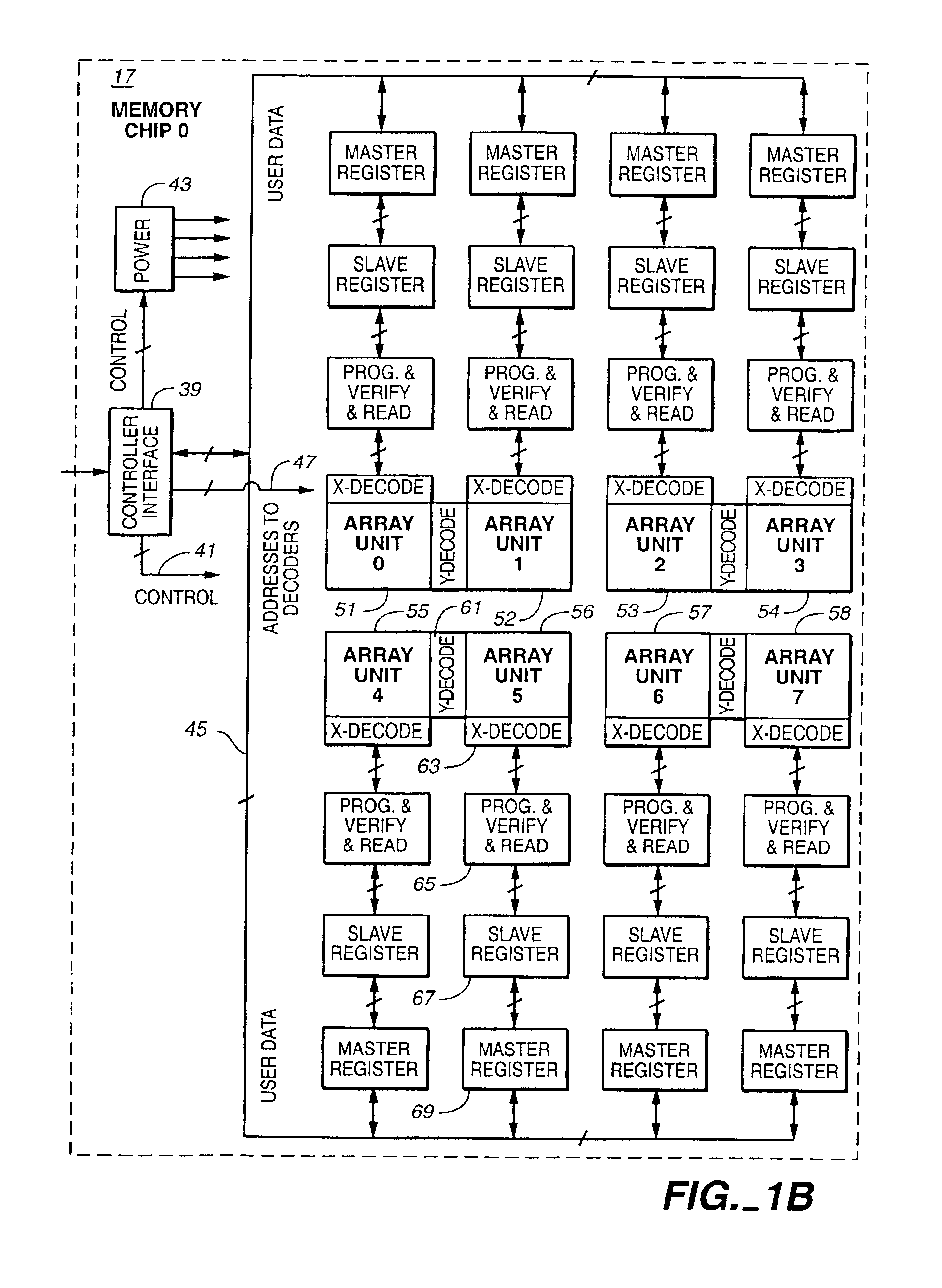Flash EEPROM system with simultaneous multiple data sector programming and storage of physical block characteristics in other designated blocks
a data sector and data sector technology, applied in the direction of memory adressing/allocation/relocation, digital storage, instruments, etc., can solve the problems of increasing power requirements, potential disturbances of adjacent cell charges, and affecting so as to simplify the manufacturing and use of the system, the effect of simplifying the operation of the controller
- Summary
- Abstract
- Description
- Claims
- Application Information
AI Technical Summary
Benefits of technology
Problems solved by technology
Method used
Image
Examples
Embodiment Construction
[0037]FIG. 1 provides a diagram of the major components of a non-volatile memory system that are relevant to the present invention. A controller 11 communicates with a host system over lines 13. The controller 11, illustrated to occupy one integrated circuit chip, communicates over lines 15 to one or more non-volatile memory cell arrays, three arrays 17, 19 and 21 being illustrated, each of the arrays usually formed on one or more separate integrated circuit chips. The illustrated controller is usually contained on a single integrated circuit chip, either without a flash EEPROM array (the example shown) or with a memory cell array. Even if a memory cell array is included on the controller circuit chip, an additional one or more chips that each contain only a memory array and associated circuitry will often be included in the system.
[0038]User data is transferred between the controller 11 and multiple memory arrays 17, 19 and 21, in this example, over the lines 15. The memory arrays ...
PUM
 Login to View More
Login to View More Abstract
Description
Claims
Application Information
 Login to View More
Login to View More - R&D
- Intellectual Property
- Life Sciences
- Materials
- Tech Scout
- Unparalleled Data Quality
- Higher Quality Content
- 60% Fewer Hallucinations
Browse by: Latest US Patents, China's latest patents, Technical Efficacy Thesaurus, Application Domain, Technology Topic, Popular Technical Reports.
© 2025 PatSnap. All rights reserved.Legal|Privacy policy|Modern Slavery Act Transparency Statement|Sitemap|About US| Contact US: help@patsnap.com



